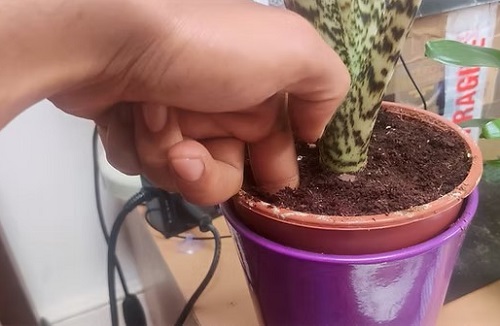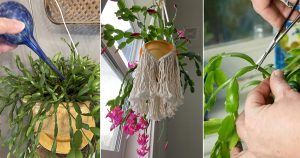Have your snake plant leaves been falling over lately? No worries, just do these things today to prevent that!
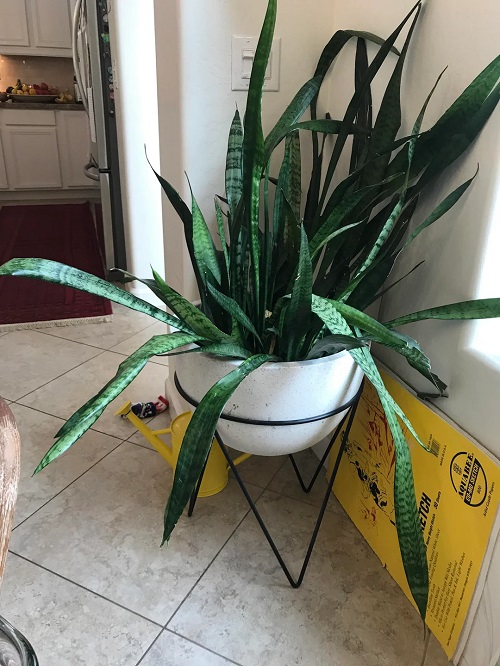
Usually, Sansevieria are super resilient plants that love a bit of neglect. But sometimes, they throw their arms up (or flop their leaves down!) to show they need some TLC. If your Snake Plant is flopping over and you can’t seem to figure out the problem, read this article. We will also tell you the tricks to deal with this issue.
Reasons Your Snake Plant Leaves Have Been Flopping Over
1. Too Much or Too Little Water
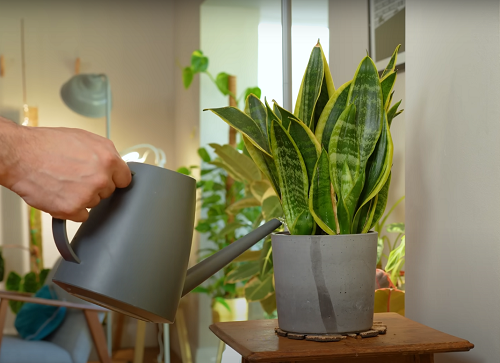
Not watering properly is the worst thing you can do for your snake plant, and that would inevitably lead to floppy leaves. Being a succulent native to West Africa, snake plants are used to long periods of drought, which means that your plants will thrive even if you water once a month— and that’s during summer.
Overwatering makes the soil excessively wet and soggy, paving the way to root rot, which starts manifesting as floppy leaves. On the other hand, soil drying out way too much to not even sustain the plant can be problematic as well.
Also, sudden changes in watering habits, like watering heavily after a long dry spell, can shock the roots and cause the leaves to droop. It’s better to adjust watering gradually if your plant has been neglected for some time.
2. Not Enough Light
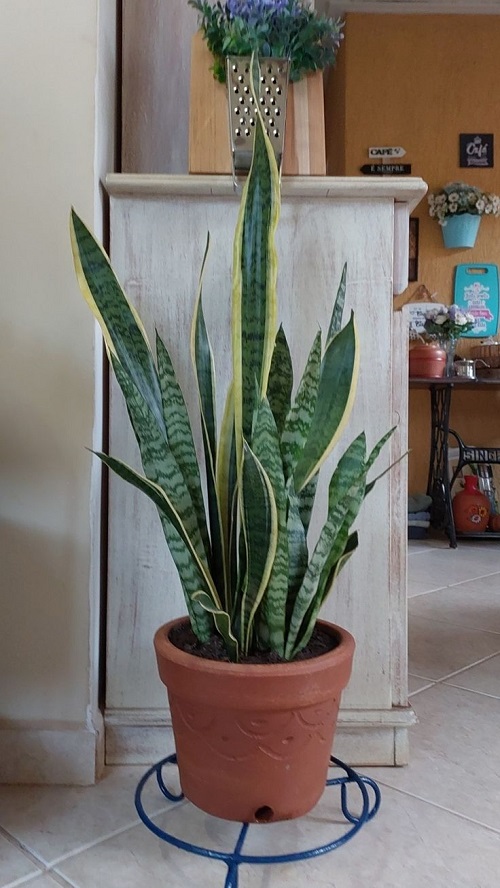
Though it’s a common saying that snake plants do not need much sunlight, the truth is quite different. While this plant is “tolerant” of low-light conditions, it does not mean it will thrive in such an environment. Too much time without adequate sunlight, and you will see snake plant leaves flopping over.
If your snake plant lives in very dim conditions, you might notice it stretching or leaning towards a light source. This is another early sign before the leaves actually flop, so it’s good to catch it early!
3. Not Enough Space at the Roots
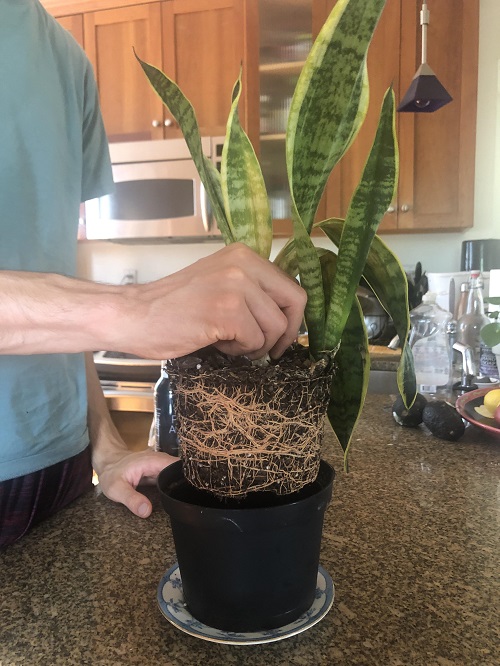
When your snake plant is a plantling, you would naturally give it a bigger pot so it can fill out and grow bigger and fuller. Often, root-bound snake plants tend to grow taller, which makes the leaves have a beautiful aesthetic appeal.
However, the problem starts when the roots are absolutely congested and even start peeking out of the pot. As they can’t get the water or nutrients to stay healthy, your snake plant leaves start to flop over.
Another small but important sign is when watering the plant makes the water sit on top of the soil for too long instead of draining quickly—this often happens when roots are overcrowded and there’s very little soil left.
4. Pesky Pests
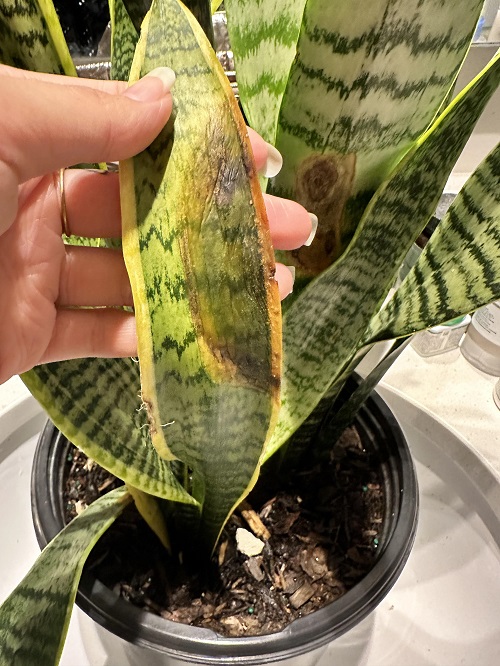
If your snake plant already receives proper care and none of the above reasons seem to be the problem, you have to be prepared for a dreadful cause of floppy leaves. And that is a pest infestation. Generally, houseplants like these are susceptible to the usual whiteflies, aphids, scale, and mealybugs.
Sometimes, spider mites can also attack snake plants, especially if the indoor air is too dry. A fine webbing or dusty look on the leaves could be a hidden clue that spider mites are causing trouble.
How to Fix Floppy Leaves on Snake Plants?
1. Do the Finger Test
In case your snake plants have been getting floppy due to overwatering. Just keep them in a sunny spot and do not water until the soil is completely dry.
If you are a beginner and are unsure of how often to water your snake plant, the easiest way is to do the finger test. Stick your finger into the soil and check if it is dry or moist. In case it is moist, you can wait a few more days before watering. If it comes out dry, you can go ahead and soak your snake plant thoroughly, letting the excess water drain out.
Once you do the finger test enough times and monitor your plant’s growth, you will get an idea of how often to water it.
Bonus Tip: Always water your snake plant from the base when possible. Bottom-watering encourages the roots to grow downward and prevents water from sitting at the base of the leaves, which can sometimes cause them to rot.
2. Adjust Light and Temperature Conditions
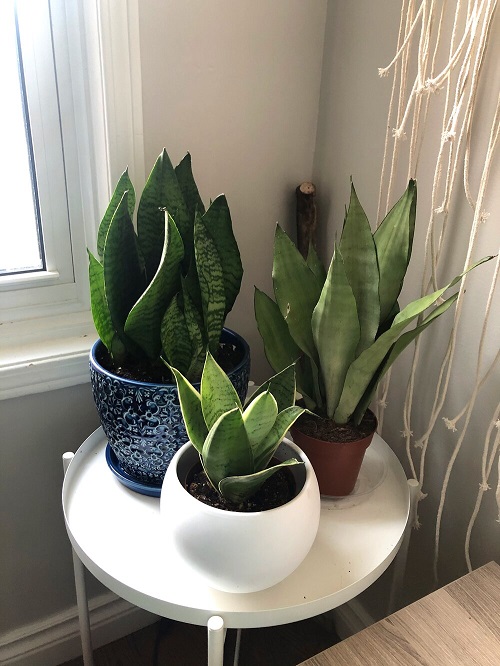
The rule of thumb when taking care of snake plants is to find a ledge near a window or simply a windowsill receiving 4 to 7 hours of bright, indirect sunlight every day. A west-facing window would work best for your snake plant. If you place your plant near a south-facing window, ensure you add a sheer curtain during hot afternoons to prevent burning the leaves.
Snake plants do well in normal temperature and humidity conditions indoors, but thrive best in temperatures between 70-90°F or 21- 32°C.
Important Note: Avoid placing your snake plant near cold drafts, heaters, or air conditioning vents, as sudden temperature changes can stress the plant and cause leaves to flop or get mushy.
3. Repot Your Plant
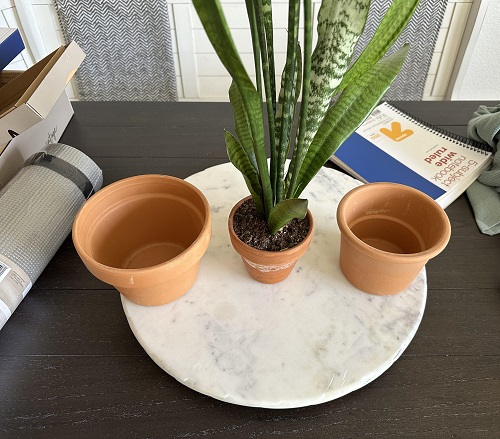
It is a must to repot your snake plant every few years to accommodate its growth. Doing this right would mean picking a pot that is no more than 2 inches the diameter of the plant. Besides giving the roots the much-needed breathing space, replenishing the soil will also help your plant get a fresh boost of nutrients.
Ensure that the soil you use is a well-draining mix and that the pot has enough drainage holes to prevent soggy conditions.
Here is one more helpful tip, when repotting, check the health of the roots. Trim off any brown or mushy roots with sterilized scissors before placing the plant into fresh soil to prevent future issues.
4. Dealing with Pests
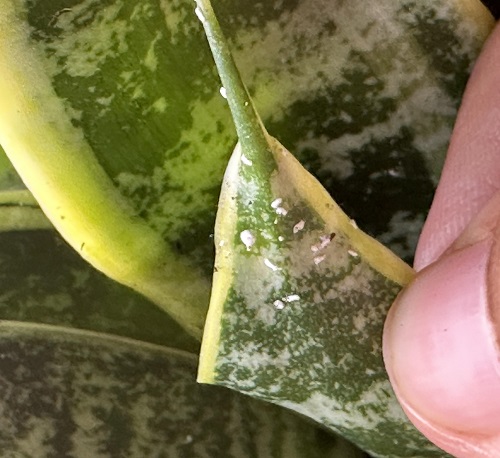
This one is very tricky to deal with, as pests on houseplants are very hard to see. Moreover, when the problem starts, the damage is usually quite localized and just manifests as paler spots on the bright leaves. You need to get up close to your plant and look for signs of movement. You may also find weird discoloration and notice these pests falling off on a sheet of paper as you tap the plant.
First, try to wash off the pests with water and insecticidal soap. You can then treat the plant with neem oil for further prevention. Ensure dusting the leaves every month to keep your plant in the best shape.
Quick Tip: If the pest infestation is severe, isolate the snake plant from your other plants immediately to prevent the pests from spreading. A week or two of quarantine while treating it can save your whole collection!
Now that you have understood both the causes and the cures to your snake plant problem, try out the solutions given and let us know how it goes for you in the comments below!

